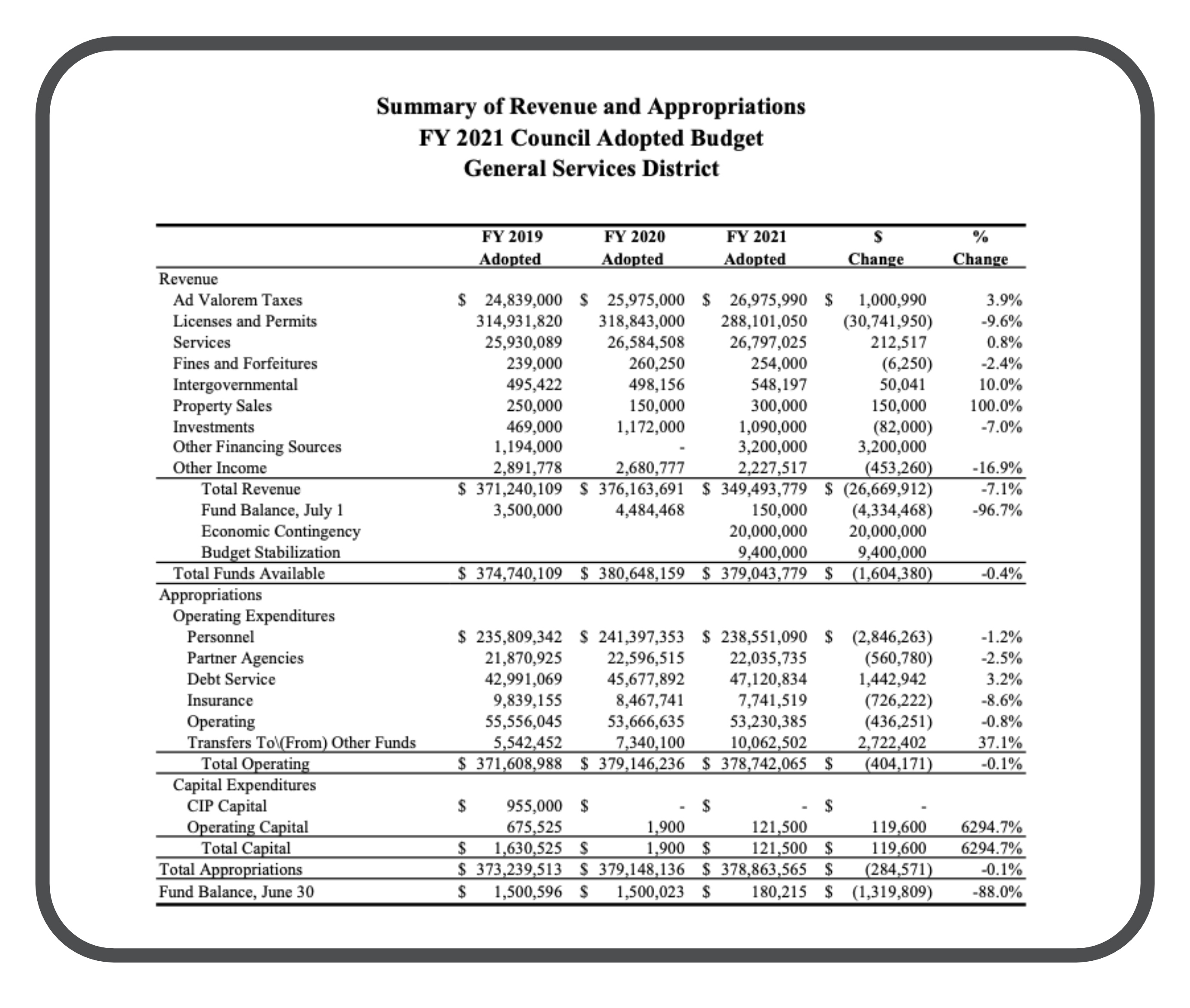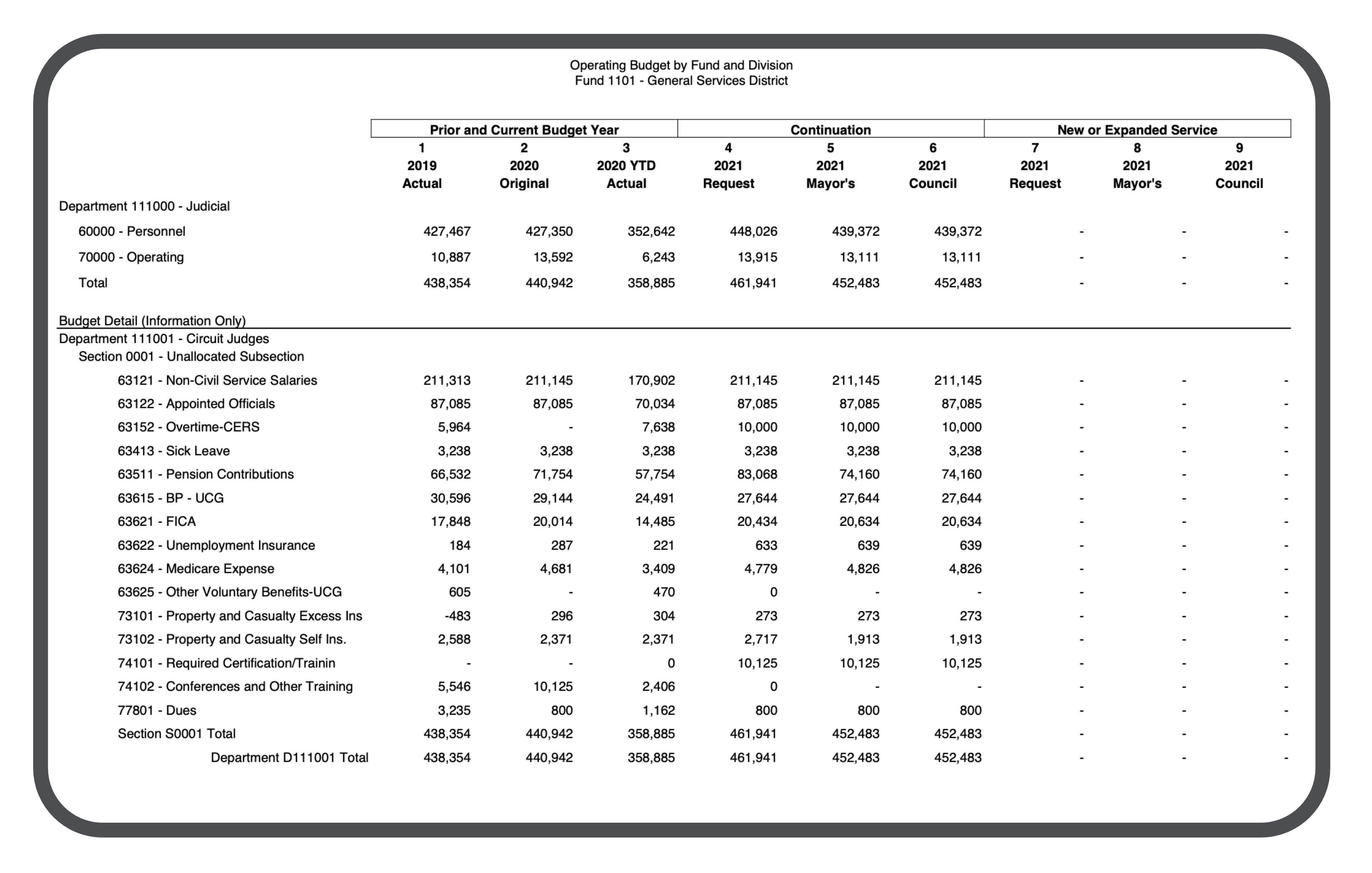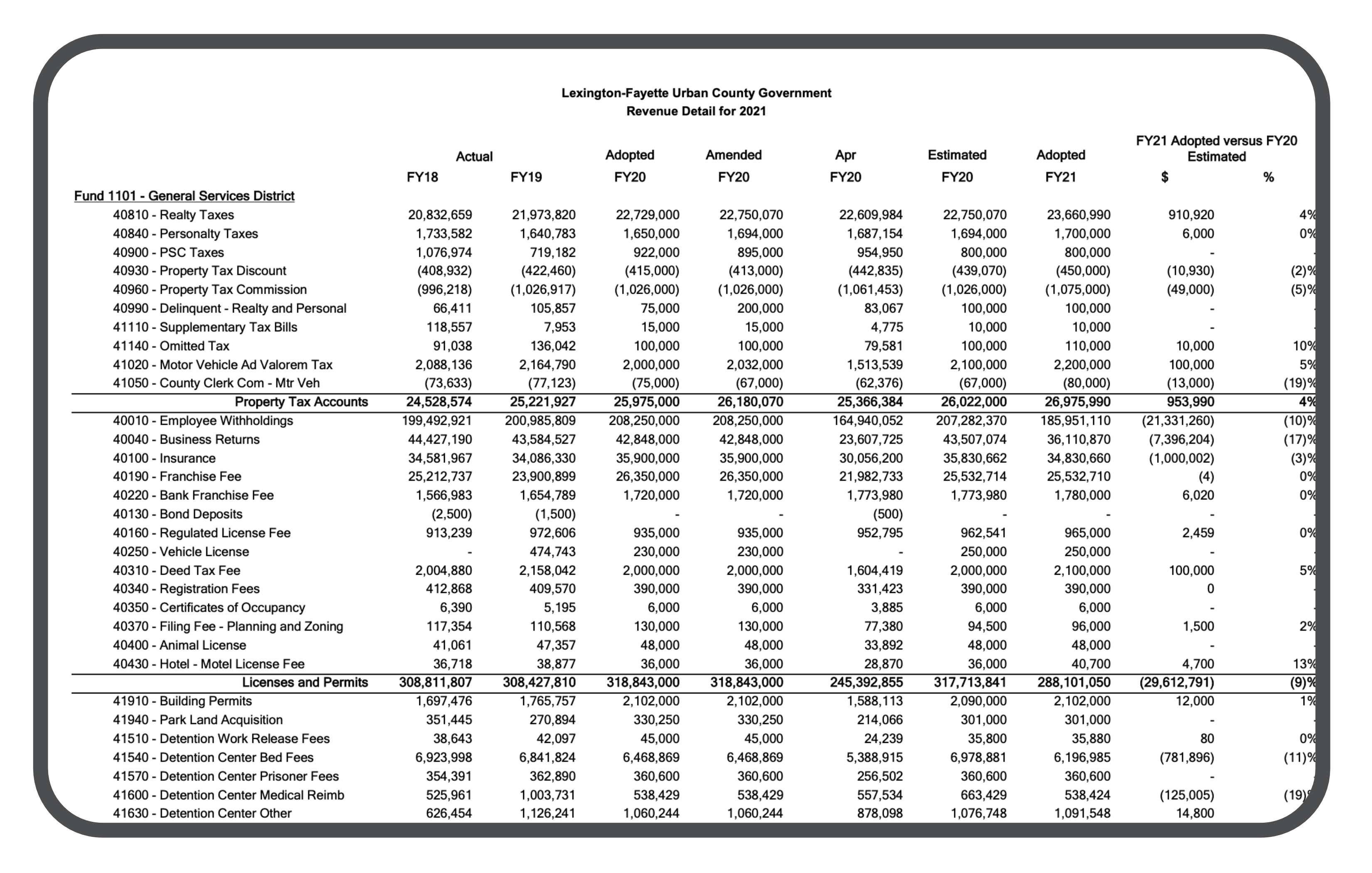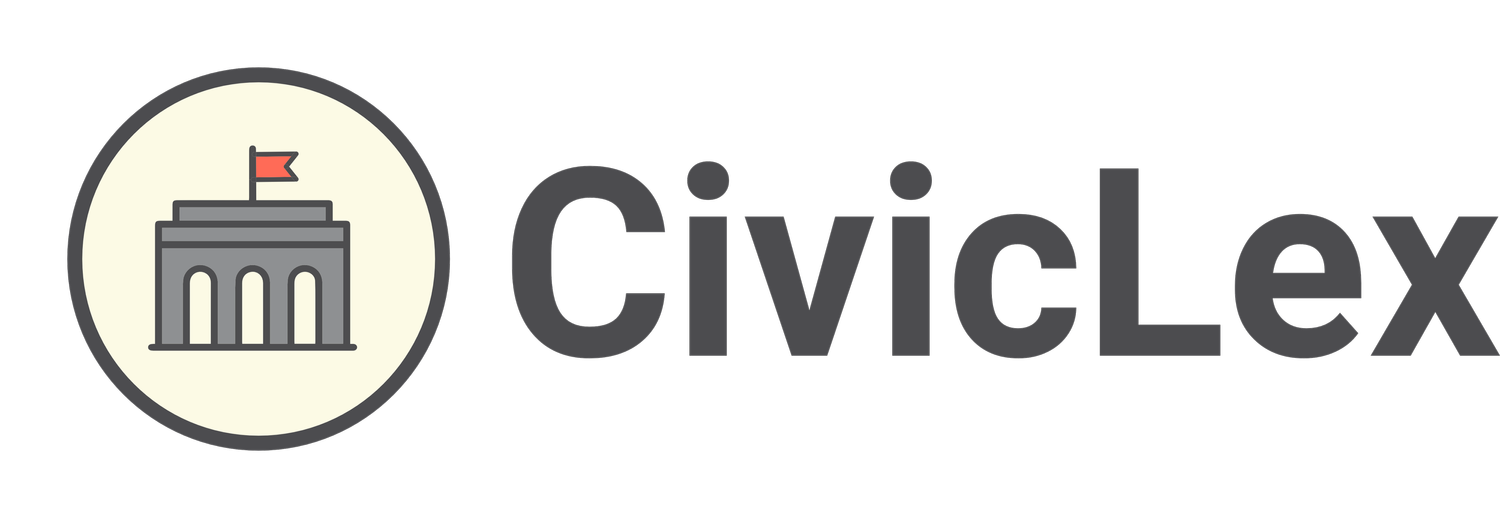Understanding the City Budget
Part of Local Government 102
A city’s budget is a reflection of its short-term values. It demonstrates quite literally what the city chooses to value and what it does not. But it is a complex document.
This unit is built for you to understand how the Lexington-Fayette Urban County Government’s budget is structured and how it is created.
What is a city budget?
A city budget is a document that shows all of the money that the city receives and spends in a given year.
The money the city receives is called revenue, and the revenue section of the budget gives details about how much money the city receives from each revenue source.
Appropriations are what the city spends its revenue on. This makes up the majority of the budget document itself.
Lexington’s budget does not go by the calendar year. Each budget describes a fiscal year, which runs from July 1 to the end of June in the following year.
How is the budget created?
January & February
The budget process starts with divisions and departments within city government filing requests for the next year’s appropriations with the Mayor’s office. These requests are usually based on the previous fiscal year’s budget, but also include requests for any new or expanded work.
March & April
Based on the Division and Departmental requests, the Mayor and staff put together a draft of the budget. This draft includes any priority projects for the Mayor’s Office. It is then presented to the Urban County Council in a public session, usually accompanied by a televised speech on GTV3.
April - May
After the Mayor’s proposed budget is presented, 3 Urban County Council members meet with each Division and Department to review their appropriations included in the budget. These happen in what are called “Links” that consist of groups of 3 council members assigned to the 5 different Division/Department groups. Link meetings are open to the public.
May - June
Once the link meetings are completed, the Council meets in what is called the “Committee of the Whole”. During this public meeting, the council Links present proposed changes, the Mayor’s Office makes late requests, Council members propose their own additions, and the budget goes up for Public Comment.
June
Once the Committee of the Whole has happened, the budget is not likely to change, and goes for its Readings before Council. The budget is presented and read to the Council in two Council Meetings, and is then voted upon for passage.
How is the budget structured?
The budget is broken into two categories, the General Services District Fund and a set of funds that together, are referred to as Restricted Funds.
The General Services District Fund
The General Services District Fund encompasses most of the basic services provided to residents. This part of the budget is the most flexible from year to year.
Restricted Funds
All other funds are Restricted for specific uses as designated by their charter, and have specific revenue (income) streams.
How do you read the budget?
Summary Pages
Start reviewing the budget by looking at the Summary pages for each fund, which give you an overview of where revenue is coming from and where appropriations are budgeted for the year.
Hover over or tap on the images below to learn more.



Revenue Summary & Operating Budget
Once you make it past the Summary sheet, take a look at the Revenue Detail and the Operating Budget by Fund. These are essentially more detailed versions of the Summary Pages. Hover over or tap on the examples below to learn more.








